Top 10 Must-See Attractions in Qing Fuling Heritage for Every Traveler
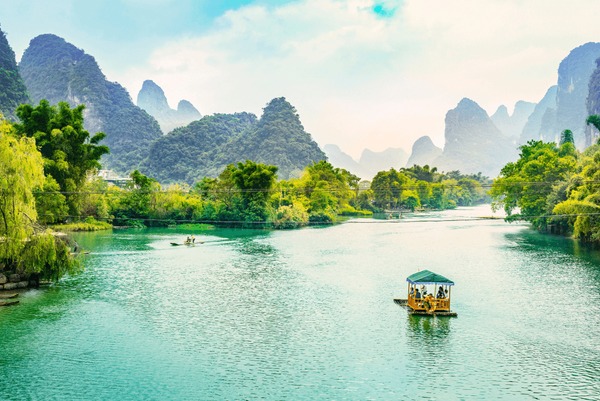
An Essential Guide to Visiting Qing_Fuling_Heritage
Nestled within the serene landscapes of Shenyang, the Qing Fuling Heritage, also known as the Eastern Tombs, is a testament to the opulence and artistry of the early Qing Dynasty. This UNESCO World Heritage site, established in 1629, serves as the final resting place of Nurhaci, the founding emperor of the Qing Dynasty, and his beloved wife, Empress Xiaocigao. As you stroll through this expansive complex, which spans over 557 hectares—approximately the size of eleven Tokyo Disneyland parks—you’ll be enchanted by the harmonious blend of nature and history.
The site is not merely a burial ground; it’s a magnificent synthesis of architecture and natural beauty. Framed by the majestic Tianzhu Mountain and the flowing waters of the Hunhe River, the tomb complex features grand structures like the iconic Red Gate and the solemn stone staircase known as the 108 Steps. Each element of the site has been meticulously designed, with vibrant glazed tiles, intricate stone carvings, and lush pine trees that create a tranquil atmosphere, inviting visitors to reflect on the rich heritage of the Qing Dynasty.
Whether you are an aficionado of history, an architecture enthusiast, or simply a traveler seeking to immerse yourself in the serenity of nature, Qing Fuling Heritage offers a captivating journey through China’s past. Prepare to be moved by the grandeur of this royal cemetery, where the echoes of history resonate with every step you take.
In This Guide
- An Essential Guide to Visiting Qing_Fuling_Heritage
- The Rich History and Legends of Qing_Fuling_Heritage
- Main Highlights: What You Absolutely Can’t Miss
- Planning Your Visit: A Practical Guide
- Tickets: Prices, Booking, and Tips
- How to Get There: A Complete Transportation Guide
- Local Cuisine and Accommodation Nearby
- Frequently Asked Questions
- Final Thoughts on Your Trip
The Rich History and Legends of Qing_Fuling_Heritage
Nestled in the serene landscapes of Shenyang, Qing Fuling, known as the Eastern Tomb, is a testament to the grandeur of the early Qing dynasty. This UNESCO World Heritage site serves as the final resting place of Nurhaci, the founding emperor of the Qing Dynasty, and his empress, Xiaocigao. Built between 1629 and 1651, it stands as the first imperial tomb of the Qing, a dynasty that would go on to rule China for nearly three centuries.
The Legacy of Nurhaci
Nurhaci, a pivotal figure in Chinese history, unified the Manchu tribes and declared the establishment of the Later Jin dynasty, which later evolved into the Qing dynasty. His vision and military prowess laid the groundwork for a dynasty that would expand its influence across China. The creation of Qing Fuling was more than just a burial site; it symbolized the beginning of a new era in Chinese governance and culture.
Architectural Marvels
Qing Fuling is an architectural masterpiece that harmonizes with its natural surroundings. The site spans approximately 557 hectares—about the size of 11 Tokyo Disneyland parks—making it not only a significant historical site but also a beautiful park. Its layout features a central axis aligned with the natural topography, flanked by lush pine trees that add to the tranquility of the area.
Visitors enter through the grand Zhenghong Gate, adorned with vibrant glazed tiles and dragon motifs, reflecting the imperial significance of the site. The journey continues along a sacred path lined with stone sculptures, leading to the magnificent 108 steps that ascend to the tomb’s core. Each step is steeped in symbolism, believed to represent the Buddhist concept of enlightenment.
Cultural Significance
The tomb complex is not just a burial site but also a cultural repository of Manchu traditions and beliefs. It incorporates elements of both Han and Manchu architecture, showcasing the diverse influences that shaped the Qing dynasty. The layout is meticulously planned to reflect the principles of feng shui, ensuring that the spirits of the emperors are harmoniously linked with the earth and sky.
Qing Fuling also contains several notable structures, including the Longevity Gate, the main hall, and various pavilions that house artifacts and inscriptions celebrating Nurhaci’s achievements. The site is a living museum, where history comes alive through its architecture and the stories it tells.
Legends and Myths
As with many historical sites, Qing Fuling is rich in legends. Stories abound about the construction of the tomb, including tales of the meticulous labor that went into ensuring every detail adhered to the emperor’s aspirations. Local folklore speaks of the hidden treasures believed to be buried with Nurhaci, sparking curiosity and intrigue among visitors and historians alike.
Visitors often report a sense of peace and reverence as they walk through the expansive grounds, a reflection of the respect held for the emperor and his legacy. The natural beauty surrounding the tomb enhances its allure, making it a popular destination for those seeking a deeper understanding of China’s imperial past.
Conclusion
Qing Fuling is more than just a burial site; it is a monumental symbol of the Qing dynasty’s beginnings and a reflection of the harmonious relationship between nature and imperial ambition. As you traverse the grounds, you are not merely witnessing history; you are stepping into a narrative woven with culture, tradition, and the legends that continue to captivate the imagination of those who visit. This UNESCO World Heritage site is a must-see for any traveler looking to grasp the rich tapestry of China’s history, making it an essential stop on your journey through Shenyang.
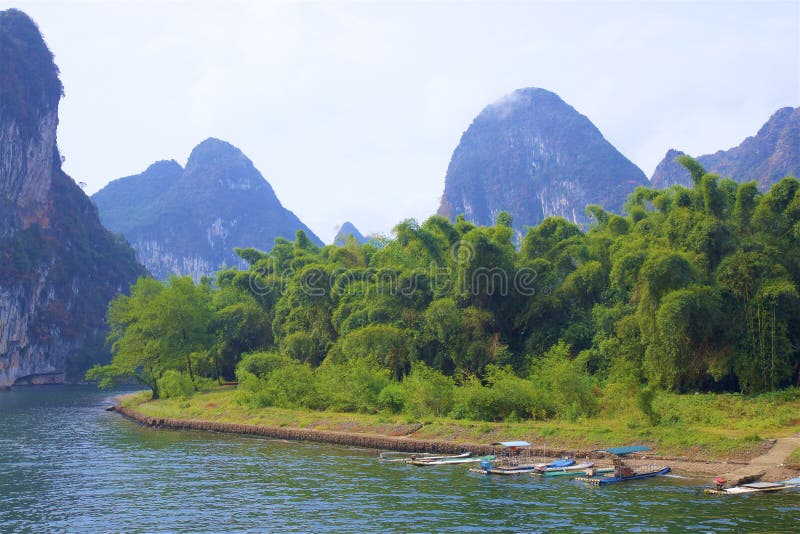
Qing_Fuling_Heritage.
Main Highlights: What You Absolutely Can’t Miss
Visiting Qing Fuling, or Fuling Tomb, is an immersive journey into the grandeur of the Qing Dynasty, encapsulating a rich tapestry of history, architecture, and natural beauty. Here are the must-see highlights that will ensure your experience is unforgettable:
1. The Majestic Main Entrance: Zhenghong Gate
As you approach the tomb, your first glimpse will be of the striking Zhenghong Gate, also known as the “Great Red Gate.” This impressive structure features traditional Chinese architectural elements, including distinctive dragon motifs and vibrant glazed tiles. It serves as a ceremonial entry for the emperors and their consorts, setting the tone for the royal atmosphere that permeates the site.
2. The Grand Processional Path
Enter through the gate and walk along the majestic processional path, flanked by intricately carved stone figures of animals and mythical creatures. This pathway leads you deeper into the tomb complex, creating a sense of pilgrimage towards the resting place of Qing Dynasty’s first emperor, Nurhaci, and his wife, Empress Xiaocigao. The ambiance is serene, enhanced by the towering ancient pine trees that line the route.
3. The Iconic 108 Stone Steps
A highlight of your visit will be the daunting 108 stone steps that ascend towards the main burial site. Each step is a nod to traditional beliefs, possibly linked to Buddhist numerology. As you climb, take a moment to appreciate the surrounding landscape, which combines natural beauty with historical significance.
4. The Enigmatic Spirit Tablet Pavilion
Upon reaching the top, you’ll arrive at the Spirit Tablet Pavilion, where a stone tablet inscribed with the achievements of Emperor Nurhaci stands. This pavilion not only showcases exquisite architectural craftsmanship but also serves as a solemn reminder of the emperor’s legacy. The intricate carvings and the peaceful atmosphere make it a perfect spot for reflection.
5. The Regal Longevity Gate
Continuing your exploration, you’ll encounter the Longevity Gate, a magnificent three-story structure that connects the main hall with the surrounding walls. Traditionally, this gate was opened only during important ceremonies, emphasizing its significance. The architectural style here mirrors that of Shenyang’s Forbidden City, showcasing the grandeur of Qing architecture.
6. The Main Burial Hall: Long’en Hall
The heart of the Qing Fuling complex is the Long’en Hall, where the emperor and empress are interred. Its roof, adorned with yellow glazed tiles, symbolizes imperial authority. The hall is an architectural marvel, reflecting the grandeur of Qing Dynasty building techniques. Although access to the actual burial chamber is restricted, the exterior and surrounding courtyards are breathtakingly beautiful.
7. The Serene Natural Setting
The tomb is nestled against the backdrop of Tianzhushan Mountain and overlooks the Hunhe River, enveloped in lush greenery. The natural surroundings enhance the spiritual ambiance of the site. Consider taking a leisurely stroll through Dongling Park, where walking trails and picnic spots offer a peaceful retreat from the bustling city.
8. Cultural Exhibits and Artifacts
Don’t miss the exhibition halls nearby, which house artifacts and exhibits detailing the history of the Qing Dynasty and its emperors. These displays provide valuable insights into the culture and traditions of the time, enriching your understanding of this historical site.
9. Photography Opportunities
Every corner of Qing Fuling offers stunning vistas for photography. From the grandeur of the gates to the intricate details of the architecture and the breathtaking natural landscapes, be sure to capture the beauty that surrounds you.
10. Plan Your Visit Wisely
To make the most of your visit, allocate 2 to 4 hours to fully explore and appreciate the site. It is advisable to go early in the day to avoid crowds and enjoy the tranquility of the area.
Qing Fuling is not just a tomb; it’s a journey through time, reflecting the power and artistry of the Qing Dynasty. As you walk through its hallowed grounds, you’ll find yourself immersed in a narrative that spans centuries, making it a highlight of your travels in Shenyang.
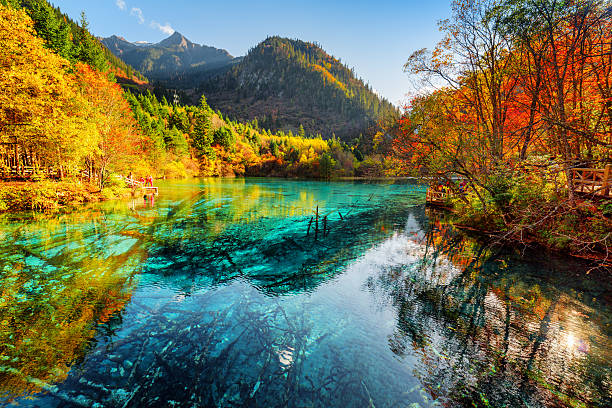
Qing_Fuling_Heritage.
Planning Your Visit: A Practical Guide
Practical Guide for Your Visit to Qing Fuling Heritage (清福陵)
Visiting Qing Fuling Heritage, also known as the Fuling Tomb, is a journey into the depths of China’s rich history, particularly the era of the Qing Dynasty. Nestled in the lush landscapes of Shenyang, this site offers a harmonious blend of cultural heritage and natural beauty. Here’s everything you need to know to ensure a rewarding visit.
Opening Hours
Qing Fuling is open to visitors daily from 8:00 AM to 5:00 PM. However, it’s a good idea to check local updates or any seasonal changes to the schedule before your visit.
Admission Fees
- General Admission: Approximately 40 RMB for adults.
- Discounted Admission: 10 RMB for university students with valid student identification.
Suggested Duration of Visit
Plan to spend 2 to 4 hours exploring the extensive grounds of Qing Fuling. This allows ample time to take in the intricate architecture, engage with the history, and enjoy the serene outdoor environment.
Getting There
Public Transport:
– Take bus 168 to the Dongling Park stop, which is a short 8-minute walk from the entrance of Qing Fuling.
Taxi: Taxis are readily available throughout Shenyang. You can easily reach Qing Fuling by giving the driver the address: No. 210 Dongling Road, Dongling District, Shenyang.
What to See
-
The Main Entrance (Zhenghongmen): This striking red gate is your first glimpse of Qing Fuling and is adorned with intricate dragon motifs.
-
Sacred Path (Shendao): Walk along the stone path lined with stone sculptures that lead you deeper into the tomb complex.
-
The 108 Steps: A unique feature of the site, these steps hold cultural significance and offer a stunning view of the surroundings.
-
Main Tomb (Longen Hall): This is the central structure housing the tomb of Nurhaci, the founder of the Qing Dynasty, and his empress.
-
Surrounding Park: The tomb is set within the expansive Dongling Park, providing a peaceful atmosphere ideal for walking and photography.
-
Historical Markers: Throughout the site, you will find plaques detailing the history and significance of various structures, many of which are available in English.
Visitor Tips
-
Dress Appropriately: Wear comfortable shoes, as you’ll be walking on uneven surfaces, and prepare for changing weather conditions.
-
Photography: Capture the stunning architecture and natural beauty, but be respectful of the sacredness of the site.
-
Guided Tours: Consider joining a guided tour for in-depth insights into the history and architecture of Qing Fuling. Audio guides may also be available.
-
Refreshments: Bring water and snacks, as food options within the park may be limited.
-
Language: While many signs are in English, having a translation app on your phone can enhance your experience.
Nearby Attractions
After exploring Qing Fuling, consider visiting other nearby sites such as:
– Shenyang Bird Island: A tranquil spot for birdwatching and enjoying nature.
– Dongling Ecological Park: Perfect for a leisurely walk or picnic.
– Mock Dunhuang Cave (万佛堂): An artistic recreation of the famous Mogao Caves, showcasing ancient Buddhist art.
This comprehensive guide should prepare you for an insightful visit to Qing Fuling Heritage, where history comes alive amidst breathtaking landscapes. Enjoy your journey into the past!
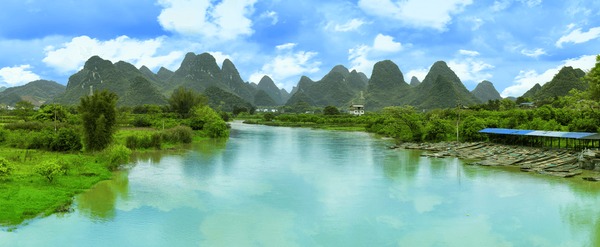
Qing_Fuling_Heritage.
Tickets: Prices, Booking, and Tips
When planning your visit to Qing Fuling Heritage (清福陵), it’s essential to navigate the ticketing process and understand the associated costs, operating hours, and tips for a smooth experience.
Ticket Prices
As of 2025, the entrance fee to Qing Fuling is quite reasonable:
– General Admission: Approximately 40 RMB (around $6 USD).
– Student Discount: If you’re a university student, you can enter for just 10 RMB by presenting your student ID.
Booking Your Tickets
Tickets can be purchased on-site at the entrance of the site. However, for convenience, it’s advisable to book in advance, especially during peak tourist seasons. Online platforms like Trip.com also offer ticketing services, which can save you time and help you avoid long lines.
Operating Hours
The site typically operates from 8:00 AM to 5:00 PM. It’s best to arrive early to fully explore the expansive grounds, as visitors often spend 2 to 4 hours wandering through the beautiful architecture and serene natural surroundings.
Getting There
Located at 210 Dongling Road, Dongling District, Shenyang, Qing Fuling is accessible via public transport. The Bus 168 will take you directly to Dongling Park, followed by an 8-minute walk to the entrance.
Tips for Your Visit
-
Best Time to Visit: Early morning or late afternoon offers cooler temperatures and fewer crowds. The soft light during these times also enhances the photography experience.
-
Wear Comfortable Shoes: The complex is vast, featuring numerous steps and pathways. Comfortable footwear will make your exploration much more enjoyable.
-
Guided Tours: Consider joining a guided tour for deeper insights into the history and significance of Qing Fuling. Many guides offer services in English and can enrich your understanding of this UNESCO World Heritage Site.
-
Check the Weather: Shenyang experiences distinct seasons. Plan your visit during spring or autumn for the most pleasant weather, and dress accordingly.
-
Photography: Capture the stunning architecture and natural beauty, but be mindful of any restrictions on photography, especially in sacred areas.
By keeping these details in mind, your visit to Qing Fuling Heritage will not only be memorable but also seamlessly enjoyable!
How to Get There: A Complete Transportation Guide
Getting to Qing Fuling Heritage is a journey into the heart of history, nestled in the lush landscapes of Shenyang, China. Here’s everything you need to know to make your visit smooth and enjoyable.
By Air
The nearest major airport is Shenyang Taoxian International Airport (SHE), located approximately 30 kilometers from Qing Fuling. This airport connects to major cities across China and some international destinations. Upon arrival, you have a few options to reach Qing Fuling:
- Taxi: Taxis are readily available at the airport. The ride to Qing Fuling will take about 40-50 minutes and cost around 100-150 RMB (approximately 15-23 USD), depending on traffic.
- Airport Shuttle Bus: Look for shuttle buses that connect to key locations in the city. You may need to take a bus to the city center and then switch to local transport.
By Train
Shenyang has excellent train connections, making it easy to reach from cities like Beijing, Harbin, and Dalian. The main train station, Shenyang Railway Station, is well-connected to the rest of the city.
- From Shenyang Railway Station to Qing Fuling: Once you arrive at the station, you can take a taxi directly to the site. The distance is about 20 kilometers, which should take around 30-40 minutes by car.
By Public Transport
If you’re looking to experience the local life, public transport is a great option:
-
Bus: Take Bus 168 from various locations in the city, including the railway station. Disembark at the Dongling Park Stop (东陵公园站). From there, it’s an easy 8-minute walk to Qing Fuling. Buses are frequent and cost around 2 RMB (less than 0.30 USD).
-
Metro: The Shenyang Metro is efficient and user-friendly. You can take Line 1 to the Zhongjie Station, then switch to Bus 168 or take a taxi from there.
By Car
For those who prefer driving, renting a car or using a ride-sharing service is convenient:
-
Car Rental: Several international and local car rental companies operate at the airport and within the city. Ensure you have a valid driver’s license and are familiar with local traffic regulations.
-
Ride-Sharing Services: Apps like Didi are widely used in China. You can easily book a ride to Qing Fuling from your location.
Accessibility
While Qing Fuling is accessible via various modes of transport, it’s worth noting that the site involves some walking, particularly up the 108 steps leading to the main tomb area. Comfortable footwear and an early start will enhance your experience.
In Conclusion
Whether you arrive by air, train, or local transport, reaching Qing Fuling Heritage promises to be an adventure in itself. Once there, you’ll be immersed in the grandeur of this UNESCO World Heritage site, surrounded by stunning natural beauty and rich history. Enjoy your journey!
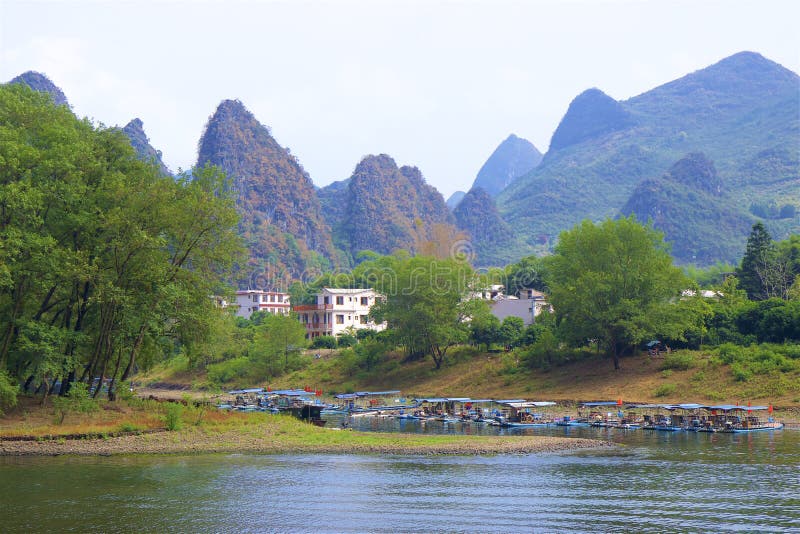
Qing_Fuling_Heritage.
Local Cuisine and Accommodation Nearby
Exploring the Qing Fuling Heritage site not only immerses you in the rich history of the Qing Dynasty but also opens up a delightful array of culinary experiences and accommodation options nearby. After wandering through the majestic tombs and lush surroundings of the Dongling Park, you’ll surely want to indulge in some local flavors and find a cozy place to rest.
Local Cuisine
Just a stone’s throw from the Qing Fuling Heritage site, you can savor authentic northeast Chinese cuisine. Here are a couple of recommended spots:
-
Laobing Restaurant (老边饺子馆)
Famous for its dumplings, this restaurant offers a variety of fillings, including pork, beef, and vegetable options. Their signature dish, boiled dumplings served with a spicy dipping sauce, is a must-try. The atmosphere is casual, making it a perfect stop for a hearty meal after your visit. -
Lao Gen Mountain Villa (老根山庄)
Located about 2.2 kilometers from the heritage site, this restaurant specializes in traditional northeastern dishes. Try the Guo Bao Rou (sweet and sour pork) or the Dried Fish with Pickled Vegetables, both of which embody the bold flavors of the region. The rustic decor and surrounding greenery provide a charming dining experience. -
Xinfushan Seafood BBQ (鑫釜山海鲜烧烤)
If you’re in the mood for grilled dishes, this seafood BBQ place is just a short drive away. Enjoy skewers of fresh seafood and local meats cooked to perfection, best accompanied by a local beer.
Accommodation Nearby
After a fulfilling day of exploring and feasting, here are some accommodations that will make your stay comfortable:
-
Zhenyu Hotel (振宇宾馆)
This hotel is conveniently located near the Qing Fuling site, providing easy access to the heritage area. The rooms are spacious and well-appointed, offering a mix of traditional Chinese decor with modern amenities. Guests often rave about the serene environment and the helpful staff. -
Conrad Shenyang (康莱德酒店)
For those seeking luxury, the Conrad Shenyang is a top choice. Located a bit further away but worth the drive, this upscale hotel features elegant rooms, a spa, and fine dining options. It’s an excellent place to unwind after a day of exploration. -
Shenyang Huashan Hotel (华山酒店)
A great mid-range option, this hotel provides comfortable accommodations and is known for its friendly service. The hotel also features a restaurant serving local dishes, making it convenient for guests to enjoy meals without venturing far.
When visiting Qing Fuling Heritage, you’ll find that the combination of local cuisine and comfortable lodging enhances your travel experience, allowing you to savor the essence of Shenyang both in its historic sites and its culinary delights.

Qing_Fuling_Heritage.
Frequently Asked Questions
-
What is Qing Fuling Heritage?
Qing Fuling, also known as Dongling or the Tomb of the Qing Dynasty’s founder Nurhaci and his wife, is an important historical site located in Shenyang. It is part of a larger park and was designated a UNESCO World Heritage site in 2004. This magnificent tomb complex features ancient architecture and a serene natural landscape, making it a significant cultural and historical attraction. -
What are the opening hours for Qing Fuling?
Qing Fuling is open daily from 8:00 AM to 5:00 PM. It’s recommended to plan your visit during these hours to fully explore the complex and enjoy the surrounding parkland. -
How much is the entrance fee?
The ticket price for adults is approximately 40 RMB, while students with valid ID can enter for just 10 RMB. Prices may vary, so it’s a good idea to check for any updates before your visit. -
How do I get to Qing Fuling?
To reach Qing Fuling, you can take bus number 168, which will drop you off at the Dongling Park stop. From there, it’s about an 8-minute walk to the entrance. Alternatively, taxis are readily available in Shenyang. -
What should I wear when visiting?
Comfortable walking shoes are highly recommended, as you will be exploring a large area with many steps and pathways. Dress in layers, as the weather can vary, and bring a hat and sunscreen for sunny days. -
How long should I plan to stay at Qing Fuling?
Visitors typically spend about 2 to 4 hours at Qing Fuling to fully appreciate the architecture, gardens, and historical significance. If you enjoy photography or want to explore the park further, consider allocating more time. -
Are there any guided tours available?
Yes, guided tours are available, and they can enhance your experience by providing detailed insights into the history and architecture of Qing Fuling. Tour services may be available in multiple languages, including English. -
What nearby attractions should I consider visiting?
After exploring Qing Fuling, consider visiting the nearby Shenyang Bird Island and Dongling Forest Park, which offer additional scenic views and recreational activities. The Wanfo Hall, a replica of the Mogao Caves, is also worth a visit for those interested in cultural heritage.
Final Thoughts on Your Trip
As your journey through Qing Fuling Heritage comes to a close, take a moment to reflect on the profound history and serene beauty that envelop this sacred site. Nestled among the lush landscapes of Shenyang, the majestic tomb of Nurhaci and his beloved Empress exemplifies the grandeur of the early Qing Dynasty. Walking through the ancient pathways lined with towering pines, you are transported back in time, feeling the echoes of imperial reverence that resonate within the walls of this UNESCO World Heritage site.
This remarkable complex, with its intricate architecture and serene ambiance, offers not just a glimpse into China’s imperial past but also a tranquil escape from the bustling modern world. Whether you’ve marveled at the exquisite craftsmanship of the buildings, climbed the 108 steps to the tomb, or simply soaked in the peaceful surroundings of Dongling Park, each moment spent here is a testament to the enduring legacy of a rich culture.
As you prepare to depart, carry with you the stories of the past and the beauty of Qing Fuling. Let the spirit of this historic site inspire your travels ahead, reminding you that every destination holds a unique tale waiting to be discovered. Safe travels, and may your future adventures be filled with wonder and discovery!